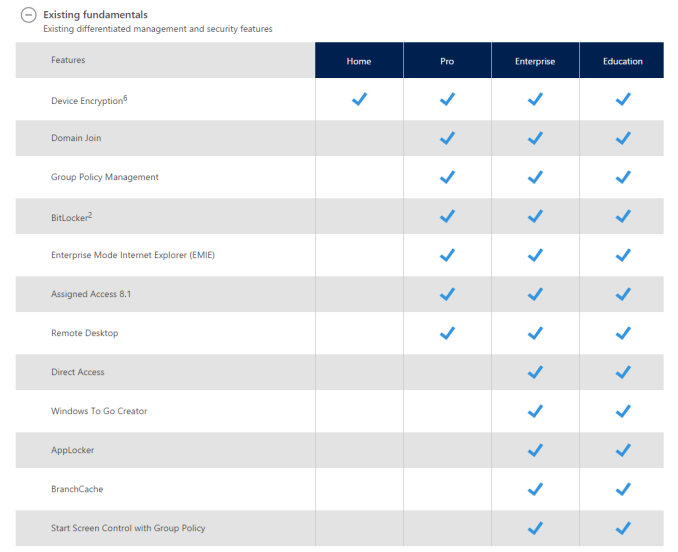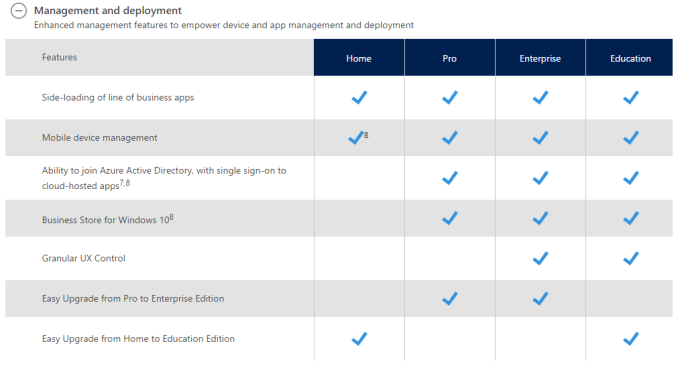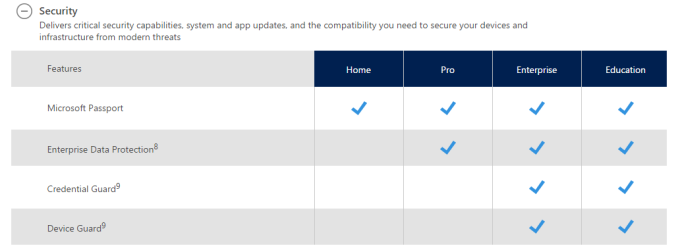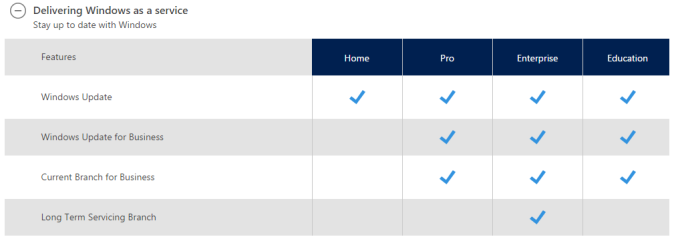Windows 10 Editions Compared
by Brett Howse on July 2, 2015 10:45 PM EST- Posted in
- Operating Systems
- Windows
- Microsoft
- Windows 10

Today Microsoft has finally created tables outlining what the different versions of the operating system are going to feature. It was back in May that they finally announced all of the versions of Windows 10 that are coming, but the actual features of each version was still a mystery. We could of course take an educated guess based on history, but as of today there is finally a list of all of the features broken down by version.
As a refresh, on the PC there are four basic versions. Home and Pro are the two that will be available for most people to purchase, and Enterprise is available to customers with volume licensing agreements. There is also an Education edition targeted towards that market.
As expected, Home has the fewest features available. Much like previous versions, there is no support to join an Active Directory domain, but that was not expected either. One thing that many users were hoping to see on Windows 10 Home is BitLocker support. BitLocker is Microsoft’s drive encryption suite, and Windows 10 Home does not have this unfortunately. There can still be encryption, but only as part of InstantGo, which was formerly known as Connected Standby. InstantGo is Connected Standby plus device encryption, and that is available to Home.
Windows 10 Pro keeps support for Remote Desktop, and it can of course join an Active Directory domain just as in prior versions. It also has access to the new Windows Update for Business service, but it must be kept on the Current Version branch.
Enterprise and Education are very similar, and both offer practically the same feature set. The one big difference is that Enterprise customers can opt into the Long Term Servicing Branch whereas Education customers cannot.
Pro, Enterprise, and Education also have access to the Business Store for Windows 10, and even the Home version supports side-loading of business apps.
One thing that is nice to see is that all versions feature support for Mobile Device Management, although the Home version will not have this support initially and it will be added at a later time.














66 Comments
View All Comments
Lerianis - Monday, July 6, 2015 - link
Excuse me? Will still connect to cloud even with local searches? Citation for this please because I think you are spouting bullplop.Lerianis - Monday, July 6, 2015 - link
Say what? Do you have TWO discrete processors (one plugged into one slot, another plugged into another)?If so, yes.... Windows 10 Home will still only use ONE of those processors but really a home machine should not have two processors.
It should have ONE processor with MULTIPLE CORES, which means that no matter how many cores are on that processor, it should use them all!
If your machine is not using all the cores on your single processor, you have tweaked some settings to make it default to that behavior.
Lerianis - Monday, July 6, 2015 - link
No idea, you would have to contact Microsoft and talk with them about that.Nibholm - Tuesday, July 7, 2015 - link
Well, run resource monitor, disable all web features from search and type something. If http://i.imgur.com/tUaJKOw.png (SearchUi.exe) don't happen then i'm wrong.Pessimism - Friday, July 10, 2015 - link
I REALLY wish they would stop making Windows to Go an Enterprise only feature. Windows has been terrible at this for years. You can take a hard drive with a copy of OSX, plug it into any Mac and it will boot. Try that with Windows and you get bluescreens, for 20+ years and counting. Yes there is sysprep and products like macrium redeploy, but why can't they just build this in?daylelong - Saturday, May 25, 2019 - link
Studying at a university or college is quite difficult and that is why I use a wonderful professional platform https://studymoose.com/something-is-rotten-in-the-... where I can always find help in finding materials of any complexity.